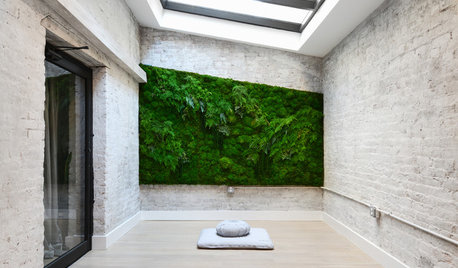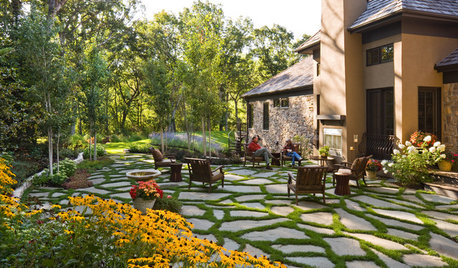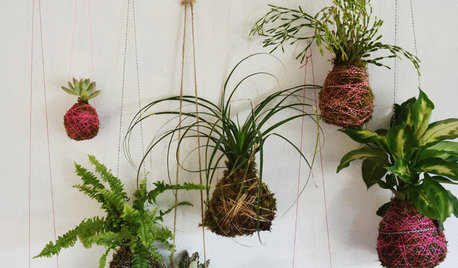Peat Moss and Nitrogen
rt_peasant
14 years ago
Related Stories

HOUSEPLANTSBaby Tears Mimics Moss for a Green Accent Indoors
This adaptable spreader thrives in water or soil, making it a terrific addition to containers and living walls
Full Story
GREEN BUILDINGWorld of Design: The Joy of Moss and Its Modern Uses
This great design plant is 400 million years in the making. See how it’s inspiring art, soothing spaces and building design
Full Story
GARDENING AND LANDSCAPINGPatio Pavers Go Green in Between
Kind to the environment and easy on the eyes, pavers with moss or other foliage in the joints create a charming permeable hardscape
Full Story
HOUSEPLANTSDIY Project: How to Make a ‘Kokedama’ String Garden
Dig in to create a simple, beautiful Japanese-inspired hanging garden
Full Story
FARM YOUR YARDHow to Grow Vegetables in Containers
Get glorious vegetables and fruits on your patio with a pro’s guidance — including his personal recipe for potting mix
Full Story
CONTAINER GARDENSContainer Gardening Basics: The Dirt on Soil
Learn the types of potting soil available and the best mixes to help your containers thrive
Full Story
EDIBLE GARDENSSummer Crop: How to Grow Blueberries
Plant blueberries in spring or fall for garden beauty through three seasons — and a sweet superfood in summer
Full Story
GARDENING GUIDESWhat's Wrong With My Plant? Leaves Often Hold the Clues
Learn how to identify common plant ailments by reading their leaves
Full Story
GARDENING GUIDESHow to Fix Bare and Yellow Lawn Spots
Restore your turf’s good looks by reseeding unsightly patches
Full Story
GRASSESHow to Rock a Lawn
Weekend Project: The key to healthy grass begins with the soil. If turf works for you, here’s how to fix it and keep it looking its best
Full StorySponsored
Columbus Area's Luxury Design Build Firm | 17x Best of Houzz Winner!
More Discussions







bpgreen
tsugajunkie z5 SE WI ♱
Related Professionals
Arnold Landscape Architects & Landscape Designers · Carson Landscape Architects & Landscape Designers · Billerica Landscape Contractors · Athens Landscape Contractors · Berkley Landscape Contractors · Chelmsford Landscape Contractors · Doctor Phillips Landscape Contractors · Mission Bend Landscape Contractors · New Baltimore Landscape Contractors · Shoreview Landscape Contractors · Tinton Falls Landscape Contractors · Whittier Landscape Contractors · Hueytown Landscape Contractors · Crestline Decks, Patios & Outdoor Enclosures · Fort Lee Decks, Patios & Outdoor EnclosuresKimmsr
gardengal48 (PNW Z8/9)
tapla (mid-Michigan, USDA z5b-6a)
gardengal48 (PNW Z8/9)
Lloyd
lazy_gardens
jonhughes
Lloyd
rt_peasantOriginal Author
natschultz
bpgreen
gardengal48 (PNW Z8/9)
rt_peasantOriginal Author
idaho_gardener
rt_peasantOriginal Author
jonhughes
biggjoe
david52 Zone 6
borderbarb
tishtoshnm Zone 6/NM
jolj
wayne_5 zone 6a Central Indiana